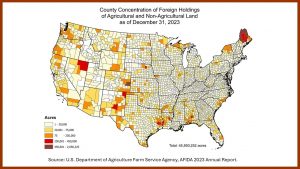
Butter prices have rocketed in recent months, trading at record highs across Europe in bad news for bakers and pastry makers as they prepare for Christmas celebrations and already face high chocolate and sugar costs.
Strong demand for butter, tight stocks and dairy processors’ preference to use more milk for the most profitable products such as cheese have driven the price surge, analysts say.
European butter was trading on world markets at a record $8,706 per metric ton by Sept. 29, up 83% on year, latest official European Commission data showed.
Prices were also higher year-on-year in Australia and New Zealand but came off summer highs.
While large food companies have covered much of their butter supplies before starting to produce Christmas cakes and ice creams, the impact for small producers will be significant with a rise in prices unavoidable, said Paul Boivin, director of the French bakers and pastry federation FEB.
Milk output declined last year in most parts of the globe including Europe, the United States and New Zealand – the world’s largest milk and butter exporter – as low prices and high feed costs discouraged many dairy farmers.
Global milk output rebounded slightly in 2024 but remained tight compared to growing demand, prompting producers to favour allocating milk to the most competitive products like cheese instead of butter, Rabobank dairy analyst Michael Harvey said.
SPREAD OF DISEASES
EU milk production grew 0.7% between January 2023 and July 2024, the latest EU data showed. Over the same period butter output fell 1.6% with stocks at historically low levels, while cheese production gained 3.2%.
The U.S. Department of Agriculture this month raised its forecast for 2024 U.S. butter prices to $3 per pound, up 15% from last year, due partly to fewer cows and less milk produced by each animal.
“Tighter milk supplies and firm demand are expected to carry the higher price outlook into 2025,” USDA said.
Revenues in the global butter market are set to reach $42 billion in 2024, up more than 8% from 2022, and the market is expected to grow annually by 7% by 2029, according to data platform Statista.
European butter prices were also somewhat supported by fears of a further decline in milk supply due to a spread of diseases in dairy cows in Western Europe, including bluetongue and Epizootic Hemorrhagic Disease (EHD), analysts said.
However, the number of outbreaks of bird flu in U.S. dairy cows was not large enough to impact the national level of milk production, USDA economist Michael McConnell said.
Butter prices should ease from record highs as dairy producers boost output to benefit from high prices but it could take several months to see a significant fall, said Susan Kilsby, analyst at ANZ bank in New Zealand.
(Reporting by Sybille de La Hamaide in Paris, Peter Hobson in Canberra and Tom Polansek in Chicago; Editing by Dmitry Zhdannikov and Andrew Cawthorne)
You can now read the most important #news on #eDairyNews #Whatsapp channels!!!
🇺🇸 eDairy News INGLÊS: https://whatsapp.com/channel/0029VaKsjzGDTkJyIN6hcP1K























